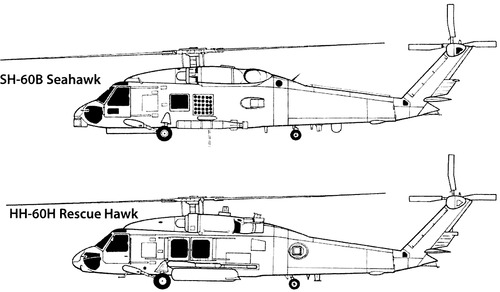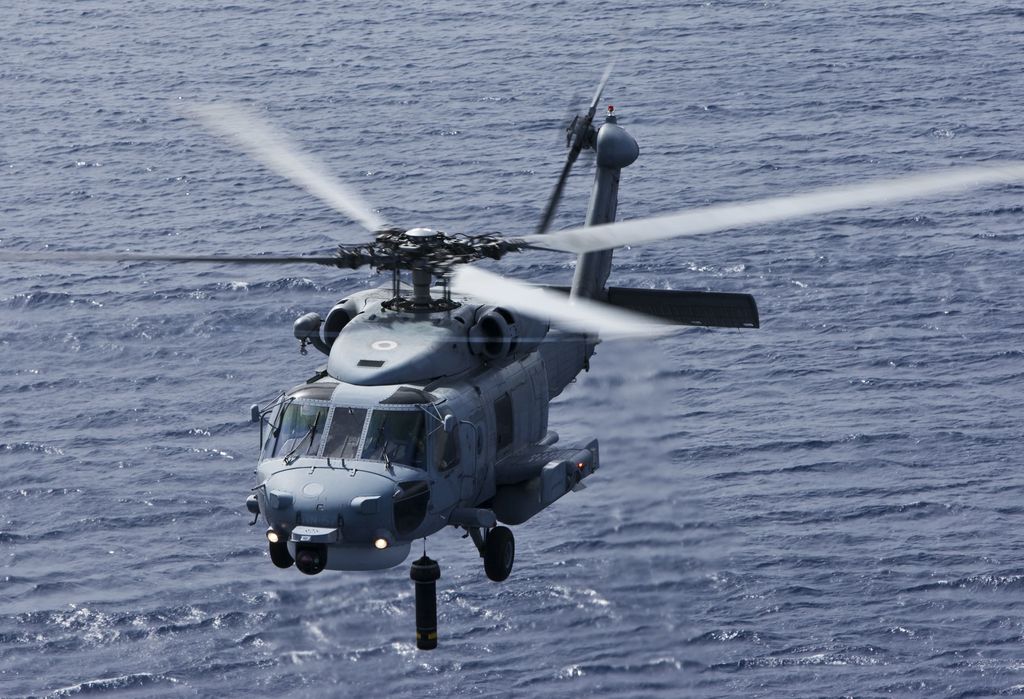Inside the Sikorsky S 70: What Sets This Helicopter Apart from Its Competitors
Wiki Article
High-Performance Multi-Role Rotorcraft Featuring Advanced Cockpit Technologies and Integrated Sensing Unit Solutions
The realm of rotorcraft modern technology has seen remarkable improvements in recent times, specifically in the world of high-performance multi-role rotorcraft equipped with sophisticated cockpit innovations and perfectly incorporated sensor systems. These developments have not just increased the functional abilities of rotorcraft however have additionally substantially impacted contemporary aeronautics procedures on numerous fronts. From improved mission versatility to enhanced operational efficiency, the convergence of sophisticated cockpit innovations and incorporated sensing unit systems has actually introduced a new age of opportunities for rotorcraft applications. In the adhering to conversation, we will certainly check out the evolution of rotorcraft innovation, explore the world of innovative cabin advancements, and analyze the implications of integrated sensing unit systems on the functional versatility and efficiency of contemporary rotorcraft.Evolution of Rotorcraft Technology
The evolution of rotorcraft innovation has actually been noted by considerable improvements in the rules of aerodynamics, materials, and propulsion systems, forming the capacities and performance of contemporary rotorcraft. Wind resistant enhancements have enhanced the performance and ability to move of rotorcraft, enabling for increased rate, dexterity, and stability throughout flight (sikorsky s 70). Advancements in products, such as using composite materials and advanced alloys, have led to lighter yet more powerful rotorcraft frameworks, enhancing overall performance and toughness. Additionally, innovations in propulsion systems, including much more effective engines and cutting-edge propulsion technologies, have made it possible for rotorcraft to attain greater altitudes, faster speeds, and higher hauls.These advancements have not just transformed the abilities of rotorcraft yet have actually also broadened their applications across various industries, consisting of military, commercial, and emergency situation services. The continuous development of rotorcraft technology proceeds to drive advancement in the field, pushing the boundaries of what is possible and shaping the future of upright trip.
Advanced Cabin Innovations
Structure upon the foundational advancements in the rules of aerodynamics, materials, and propulsion systems, the realm of rotorcraft innovation currently shifts emphasis in the direction of pioneering Advanced Cockpit Innovations. The assimilation of innovative modern technologies within the cockpit atmosphere plays an important duty in improving the functional capabilities, security, and performance of modern-day rotorcraft. sikorsky s 70. Advanced Cabin Innovations include a vast range of attributes designed to give pilots with improved situational awareness, structured data administration, and user-friendly control user interfacesAmong the vital innovations in cockpit style is the execution of glass cockpits, which replace traditional analog determines with high-resolution display screens. These digital systems supply adjustable layouts, real-time information integration, and improved readability, enabling pilots to gain access to important info at a glance. Furthermore, advanced avionics systems, such as fly-by-wire controls and enhanced reality displays, are reinventing just how pilots communicate with the airplane, permitting accurate control and enhanced decision-making abilities.


Including advanced cockpit advancements not only improves pilot performance but additionally adds to overall mission effectiveness and safety and security in intricate functional environments. By leveraging cutting edge modern technologies within the cabin, rotorcraft makers are setting new standards for operational quality and objective success.
Integrated Sensing Unit Equipments
With the advancement of rotorcraft modern check these guys out technology, the assimilation of innovative Integrated Sensor Systems has actually ended up being paramount in boosting functional effectiveness and safety and security. These Integrated Sensor Solutions include a large variety of modern technologies that offer critical information for different functions such as navigation, monitoring, targeting, and ecological tracking. By perfectly incorporating sensors like radars, video cameras, lidar, and infrared systems right into rotorcraft, drivers can take advantage of boosted situational recognition, improved mission capabilities, and reduced pilot workload.One secret benefit of Integrated Sensor Solutions is their ability to collect real-time data and supply actionable understandings to pilots and objective operators. Advanced radar systems can spot and track targets over long ranges, allowing for very early risk discovery and effective reaction preparation. Furthermore, incorporating electro-optical and infrared video cameras enables rotorcraft to conduct reconnaissance and security missions with precision and accuracy.
Essentially, the assimilation of cutting-edge sensor technologies right into rotorcraft not only enhances operational performance but additionally contributes substantially to overall goal success and staff safety. As rotorcraft proceed to develop, the function of Integrated Sensor Solution will unquestionably remain at the forefront of innovation in the aerospace sector.
Operational Flexibility and Efficiency
Enhancing functional versatility and efficiency in rotorcraft is a natural progression from the assimilation of innovative Integrated Sensing unit Solutions. By leveraging the insights and data offered by these cutting-edge sensor systems, rotorcraft can enhance their efficiency across various goals and environments.Functional flexibility includes the capacity of rotorcraft to adjust to different roles and scenarios successfully. With sophisticated cabin innovations and integrated sensing unit systems, rotorcraft can flawlessly change in between tasks such as search and rescue, clinical emptying, monitoring, and more helpful hints a lot more. This adaptability improves the rotorcraft's capability to fulfill varied functional demands without needing substantial reconfiguration.
Effectiveness in rotorcraft operations is critical for optimizing goal efficiency and resource usage. Integrated sensor systems play a pivotal role in enhancing operational performance by supplying real-time information on weather, terrain mapping, target tracking, and extra. This information makes it possible for pilots to make enlightened decisions swiftly, optimize trip courses, save gas, and improve general objective browse this site productivity.
Effect On Modern Aeronautics Workflow

Moreover, the combination of innovative sensors assists in enhanced mission planning and implementation, enabling rotorcraft to execute a large range of tasks with enhanced accuracy. From search and rescue procedures to aerial firefighting and police goals, the abilities of modern-day rotorcraft geared up with innovative cabin innovations and integrated sensor systems are unmatched.
Additionally, the effect of these advancements extends past operational effectiveness to cost-effectiveness and sustainability. By enhancing flight routes, gas consumption, and maintenance schedules, high-performance rotorcraft equipped with advanced cockpit innovations and sensors add to reducing functional expenses and environmental impact, making them essential possessions in modern-day aviation procedures.
Final Thought
Finally, the high-performance multi-role rotorcraft with innovative cabin modern technologies and integrated sensor systems stands for a considerable development in air travel technology. These innovations boost operational flexibility and performance, eventually affecting modern aviation procedures in a positive means. The combination of these advanced technologies enables for improved capabilities and efficiency in various mission scenarios, showcasing the continued innovation of rotorcraft technology in the aeronautics market.The realm of rotorcraft technology has actually seen notable developments in recent times, especially in the realm of high-performance multi-role rotorcraft equipped with cutting-edge cockpit modern technologies and seamlessly incorporated sensing unit systems. From improved objective convenience to boosted operational effectiveness, the convergence of sophisticated cockpit technologies and integrated sensor systems has ushered in a brand-new age of opportunities for rotorcraft applications. In the adhering to conversation, we will explore the development of rotorcraft technology, delve right into the world of sophisticated cabin technologies, and check out the ramifications of incorporated sensing unit systems on the operational convenience and effectiveness of contemporary rotorcraft.

Report this wiki page